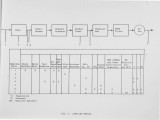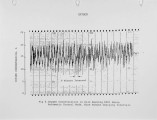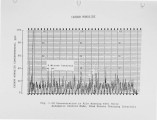| Title |
Oxygen Enhancement of the Incineration Process |
| Creator |
Gitman, Gregory M.; Khudenko, Boris M.; Wechsler, Thomas |
| Publisher |
University of Utah |
| Date |
1987 |
| Spatial Coverage |
presented at Palm Springs, California |
| Abstract |
A hazardous waste incineration facility must provide levels of destruction and removal efficiency (DRE) for the principal organic hydrocarbons (POHC) as specified by the regulatory requirements. In the longer view , an incineration facility must be both environmentally safe and economical. Economics is largely determined by the throughput capacity and on-line availability of a waste incineration facility. Continuous operation at maximum throughput capacity while meeting required destruction efficiency (DE) means operating over a wide range of variable conditions caused largely by random fluctuations in the feed rate and composition of wastes. Conventional combustion process control for incinerators has a limited capability to identify and respond to such variations in a manner which will prevent system upsets and subsequent transient release of PICs and POHCs into the environment. Operational failures of an incinerator are typically caused by deviations in process operating parameters such as temperature, residence time or the amount of available oxygen. Modern instrumentation and advances in incinerator design have provided improved control of these operating parameters through the earlier and more sensitive recognition of the events that lead to these deviations. Unfortunately, the conventional combustion aproaches which are utilized for incineration have generic limitations in their ability to recover from operational upsets. The main reason for this deficiency of conventional combustion, which uses cold air as the sole oxidizer, is that the process parameters of temperature, residence time and the amount of available oxygen are interrelated in such a manner that an increase in one of these parameters in order to intensify thermal destruction reduces the other two operating parameters. Raising the temperature, excess oxygen content or residence time of gaseous combustion products in the incineration chamber in an attempt to accelerate the combustion process will accordingly lead to the deterioration in the other two operating parameters. This paper describes an advancement in the use of oxygen in combustion which can overcome many of the deficiencies of the c onv entiona l combustion used in incineration. |
| Type |
Text |
| Format |
application/pdf |
| Language |
eng |
| Rights |
This material may be protected by copyright. Permission required for use in any form. For further information please contact the American Flame Research Committee. |
| Conversion Specifications |
Original scanned with Canon EOS-1Ds Mark II, 16.7 megapixel digital camera and saved as 400 ppi uncompressed TIFF, 16 bit depth. |
| Scanning Technician |
Cliodhna Davis |
| ARK |
ark:/87278/s6d2216s |
| Setname |
uu_afrc |
| ID |
4247 |
| Reference URL |
https://collections.lib.utah.edu/ark:/87278/s6d2216s |
























